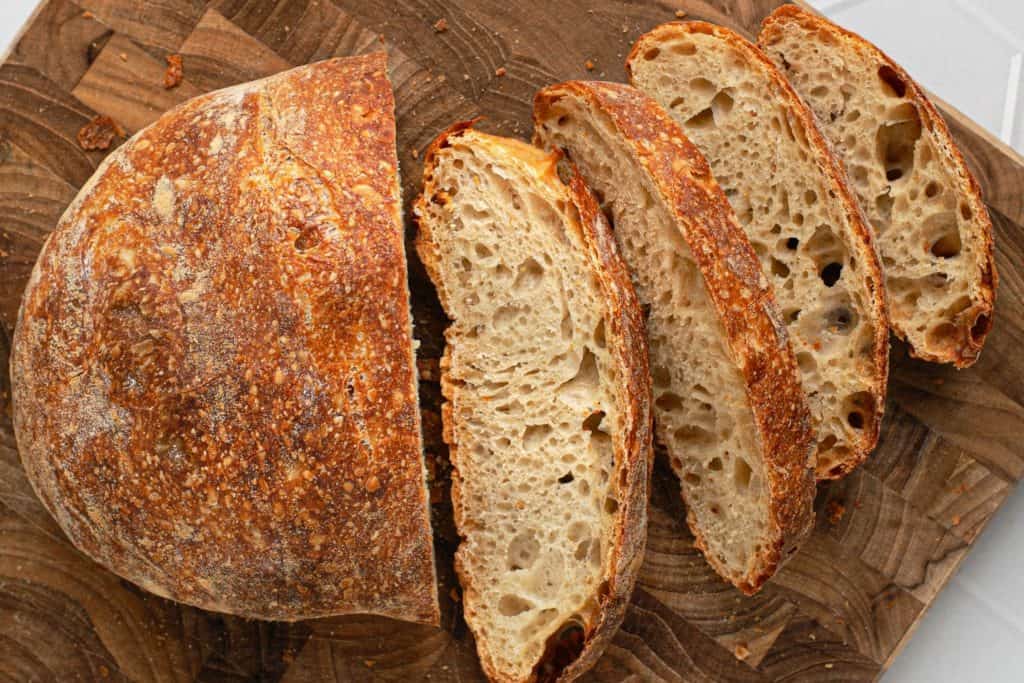What is the best temperature bake bread for making it at home? Homemade bread knowledge is an ancient practice dating back to 2000 BC. Before other baking methods, the Egyptians were the first to bake fermented bread. Bread was one of the first foods regulated in New Zealand, thanks to the Bread Ordinance and Sale of Bread Act of 1863. During that time, New Zealand settlers baked bread using two methods: mechanical dough development and bulk fermentation.
The latter method entailed leaving the dough to rise for two hours before dividing it into the desired sizes, a practice that is still practiced today. The mechanical Dough Development method, on the other hand, involved rapidly mixing the dough to cut the time it takes to rise to ten minutes.
Bread was baked in communal ovens, large masonry ovens, or over an open fire back then. Although the massive masonry ovens produced excellent results, the open fire produced loaves that were inconsistent in flavor, texture, and doneness due to the difficulty in maintaining the required homemade temp for bread.
Baking homemade bread has become somewhat easier thanks to modern inventions. Electric ovens allow bakers to easily control the temperature during the preparation, proofing, and baking processes. Furthermore, ThermoPro food thermometers enable bakers to more precisely control the temperature, enhancing the fermentation process and achieving more consistent texture. The discussion expands on everything related to homemade bread.
Best Temperatures

a) Proofing with yeast
The temperature at which the dough is prepared influences how the yeast proofs and how the bread tastes. To begin, pour warm water into a bowl, add sugar, and stir until dissolved.
Make certain that the temperature is between 95 and 115 degrees Fahrenheit. Increase the temperature to 110-130 degrees Fahrenheit after adding a tablespoon of yeast.
Using a higher temperature, such as 150 degrees Fahrenheit, destroys the yeast before it proofs, while using a lower temperature, such as 105 degrees Fahrenheit, causes the yeast to proof unevenly, affecting the final flavor of the bread.
Allow the mixture to sit for 5 to 6 minutes before adding the flour; the first 2-3 minutes allow the yeast to dissolve into the water, while the remaining three minutes help the yeast grow. Tiny bubbles should form on the surface; however, if you use musty yeast, it has no effect. It explains why proofing is necessary before adding the flour.
Temperature as the dough rises

After kneading the flour, transfer it to a large, oiled mixing bowl and cover with a damp towel or plastic wrap for one to two hours to allow the yeast to grow. The ideal temperature for the fermentation process is between 75 and 85 degrees Fahrenheit; lower temperatures cause the dough to ferment more slowly, while higher temperatures produce unsavory flavors.
If your oven has a proof setting, set it to this temperature for best results.
Because the air is lighter in cold weather than in hot weather, the dough rises faster. It explains why people who live at high elevations should use a small amount of yeast. After two hours, knead the dough to remove any air bubbles.
Because there is twice as much yeast in the dough, you can allow it to rise again after kneading. The second rising is optional and should last 30 to 60 minutes. Knead it once more before shaping it.
Best Temperature Bake Bread
The best temperature to bake bread is determined by the type of bread being baked. Lean-dough bread, for example, bakes at 190-210 degrees Fahrenheit, while heavier dough bread bakes at 180-200 degrees Fahrenheit. You can bake the bread in two ways: preheat the oven for 15 minutes to 475 degrees Fahrenheit or place the dough directly into the oven without preheating.
If you’re preheating the oven, make sure to generate steam by placing a pan of water in it and leaving it to heat at that temperature (475). Other methods for producing moisture in the oven include:
Misting: spray the side of the oven with water and close the door. The heat converts water to steam, which raises the humidity level in the oven.
Using ice cubes: Place a glass or ceramic bowl filled with ice cubes in the oven for 10-15 minutes. When all of the ice has melted, remove the bowl.
After preheating the oven, add two to three cups of water to the pan before placing the dough on the rack to bake. Allow it to bake for 20 minutes, but check for browning after 15 minutes.
Reduce the temperature to 450 degrees Fahrenheit if the crust is too brown. When the loaf is fully baked, check the underside to see if it feels soft and hollow; if not, leave it in the oven for five minutes longer.
The recipe should help you determine when the loaf is done. Professional bakers advise checking a few minutes before the actual baking time, especially if the crust is darkening. The crust should be golden brown in color.
If you want a soft, crunchy crust, turn off the oven after the bread has baked and leave it closed for 5-10 minutes. Bread that is properly done is firm; if it is too hard, it has been overdone. Bread that is too spongy, on the other hand, is undercooked and may require an additional few minutes in the oven.
Cutting the Bread

Allow the bread to cool before slicing it because slicing loaves right out of the oven is more difficult. To avoid cross-contamination, place the bread on a flat, wooden surface and avoid using boards used for chopping vegetables or meat.